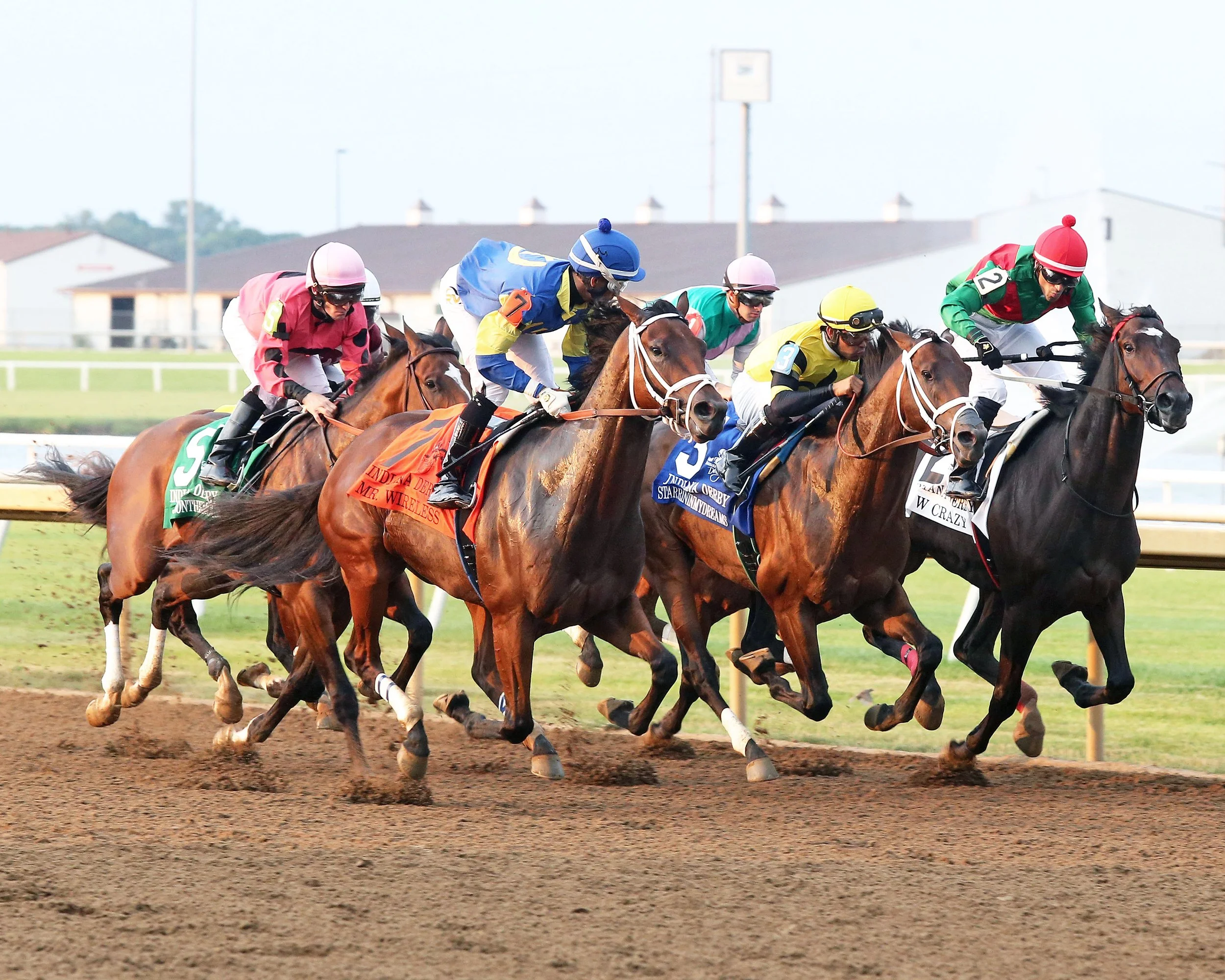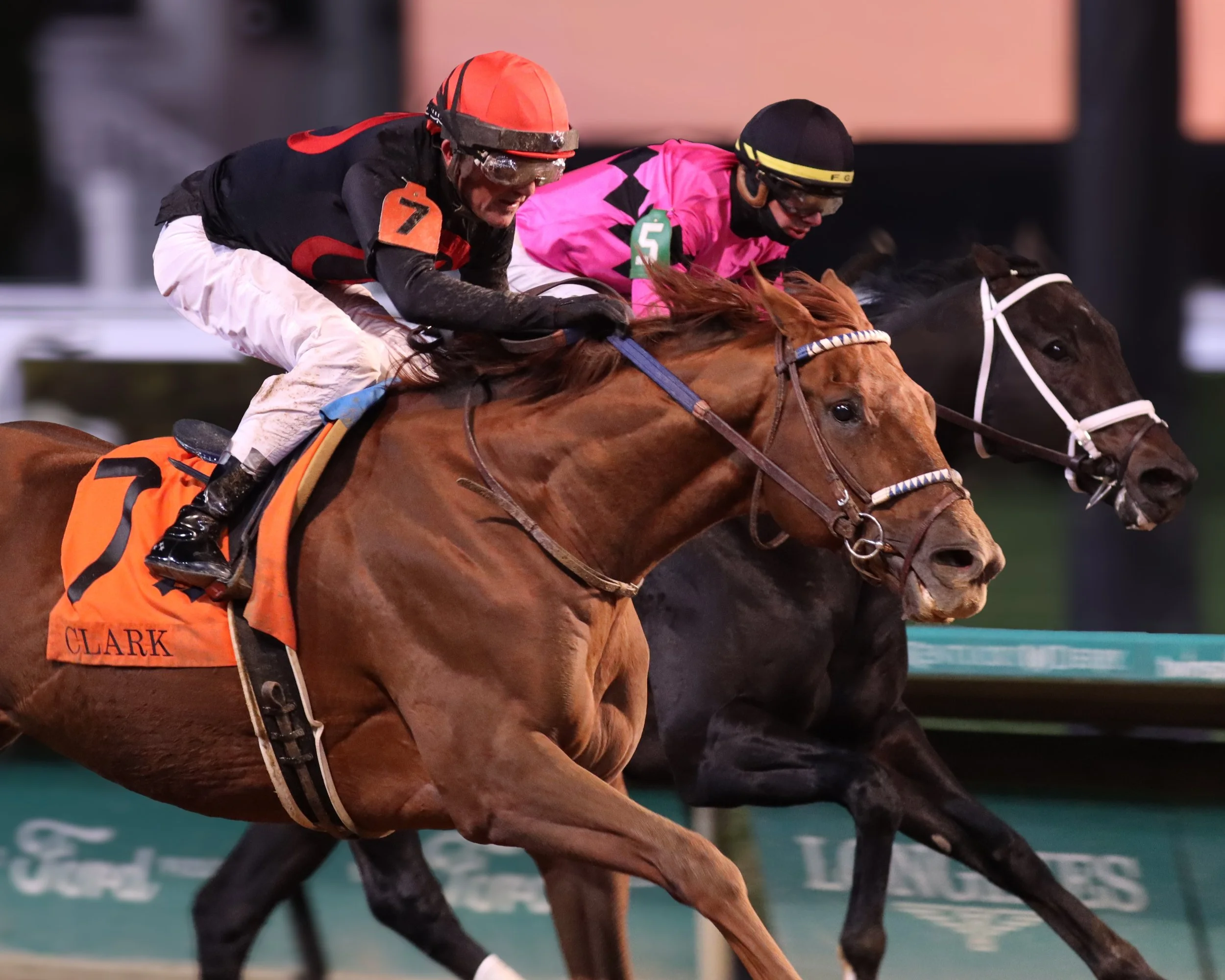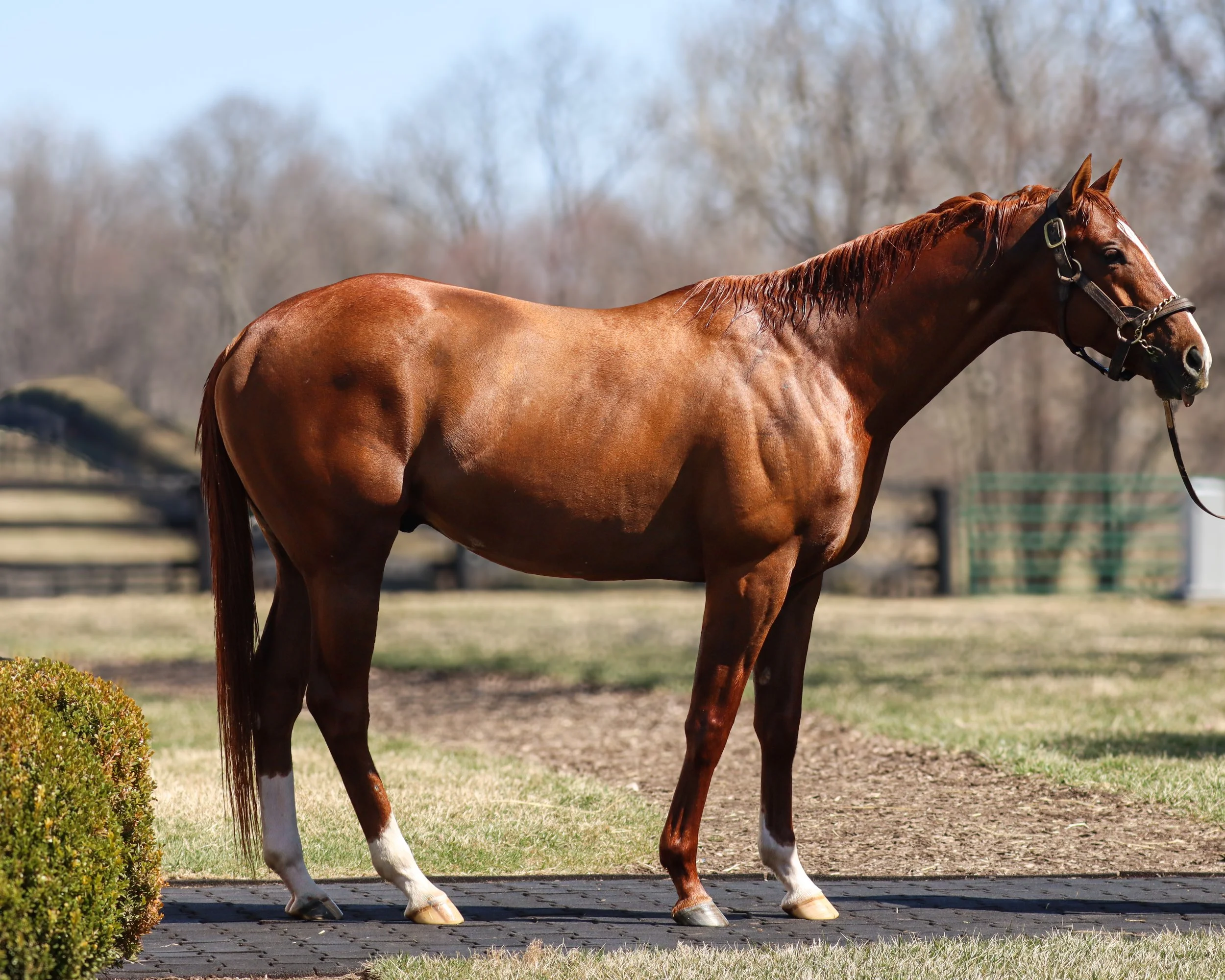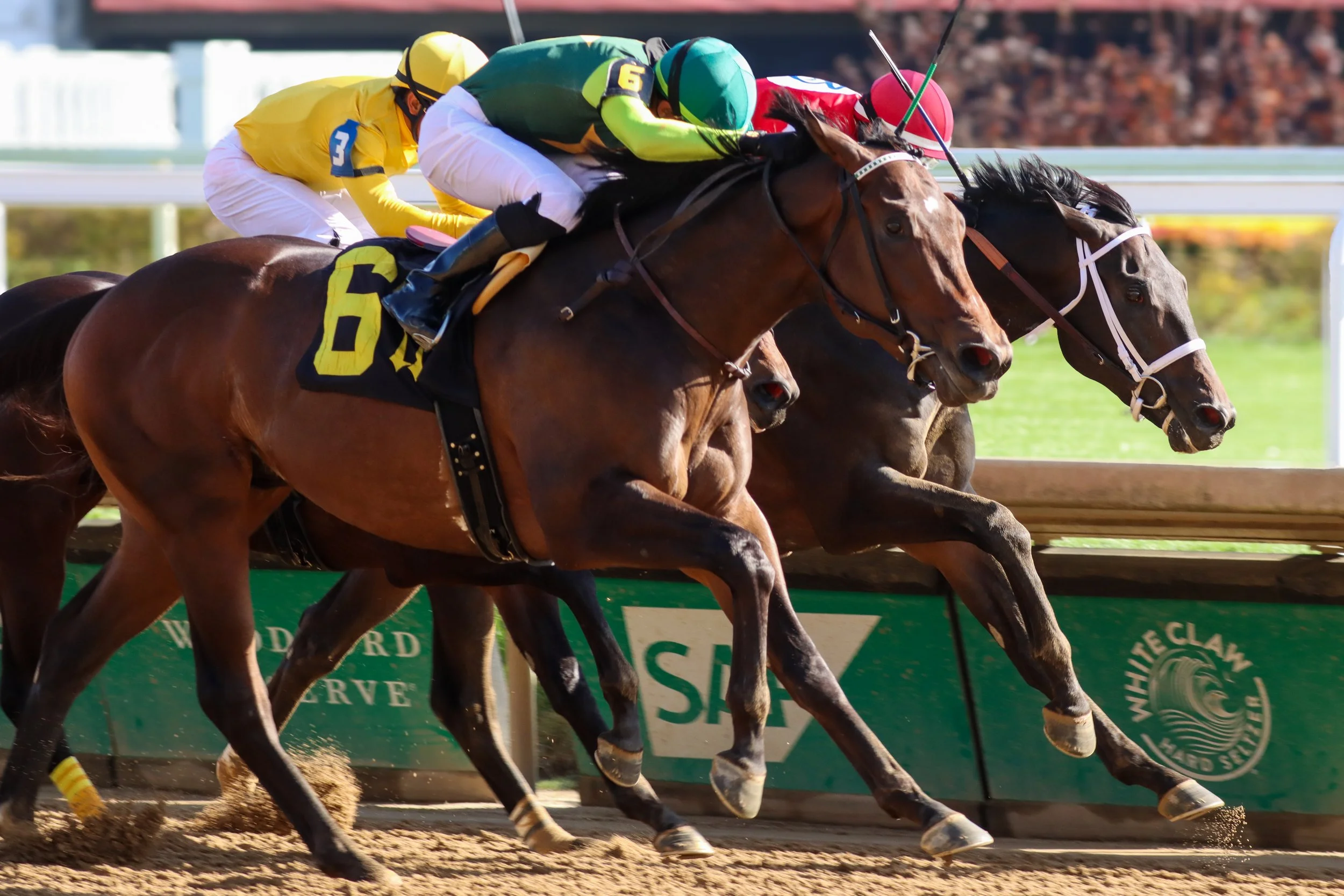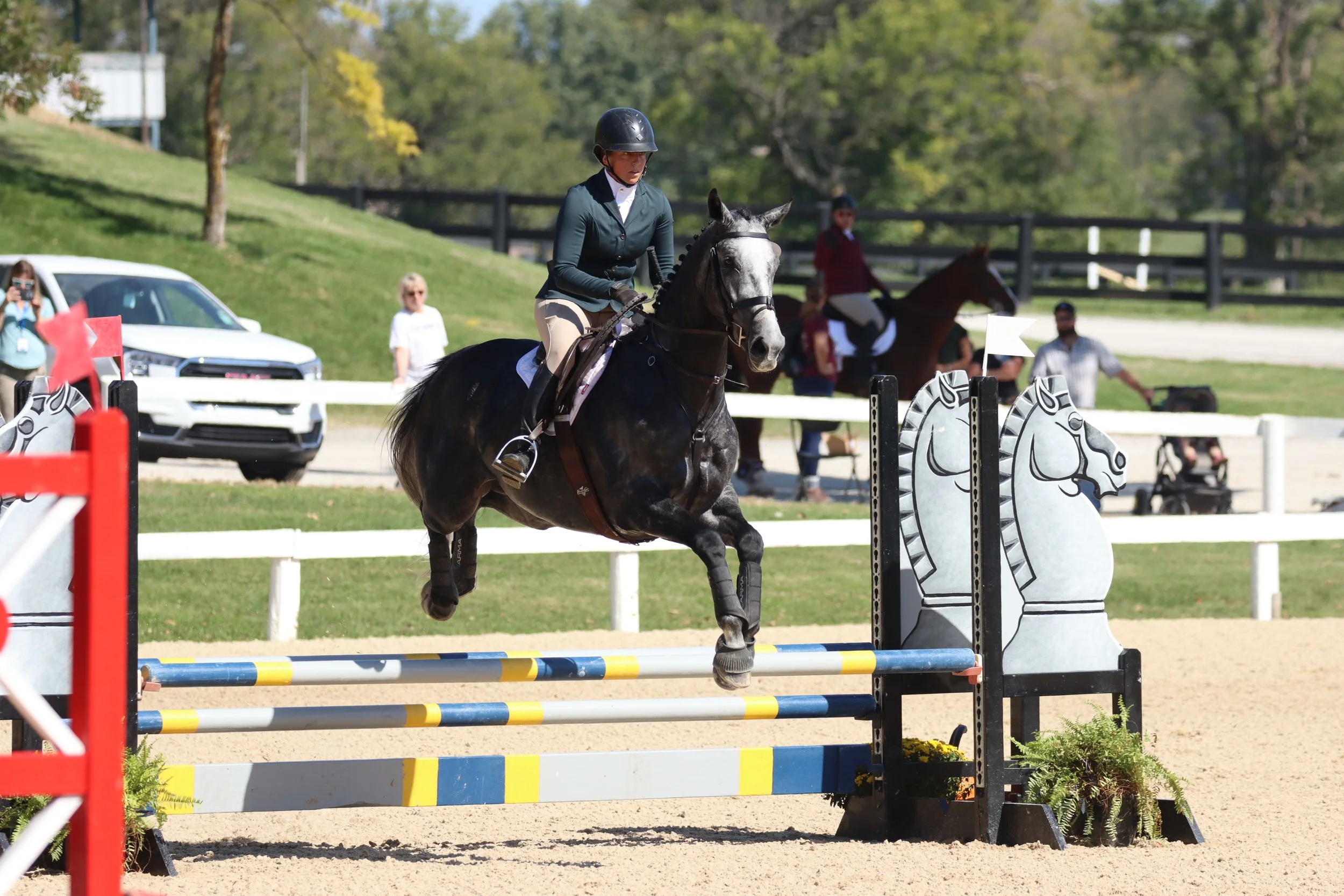LEARN
〰️
LEARN 〰️
WELCOME TO THE
THOROUGHBRED COMMUNITY
But What Exactly Does That Mean?
The Thoroughbred industry can be described in four basic categories:
-
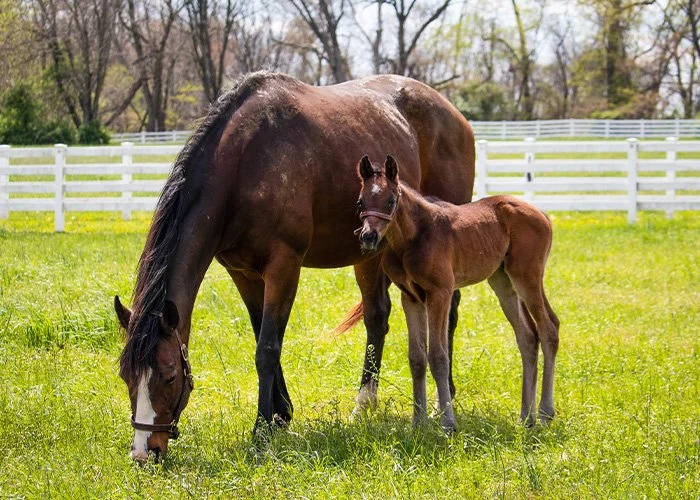
BREEDING
-

SALES
-
RACING
-
AFTERCARE
An Introduction to the North American
Thoroughbred Industry
BREEDING
Long before you see a leggy foal running alongside its mother in a pasture, the life of that foal has been meticulously planned. The pedigrees tracing back hundreds of years to three foundation stallions–The Darley Arabian, The Godolphin Arabian, and The Byerley Turk are a part of the lives of every Thoroughbred racehorse today. To determine pairings between stallions and mares, experts study the family lineage and race records and also consider the mare’s physical size and conformation. The goal is to cross her with a stallion that has the best chance of producing a foal that can eventually become a competitive racehorse.
Mares have a gestation period of 11 months. The breeding season in North America begins on or shortly after February 14, and lasts through the beginning of June. The Jockey Club is the registry for Thoroughbred horses. Regardless of a foal’s birth date, January 1 is considered their official birthday. Therefore, the breeding of mares is closely timed so they do not foal before January. Even if a mare had her foal on December 31, the foal would automatically be considered 1 year old the next day!
In North America, it is customary for Thoroughbred mares to be closely monitored when they give birth, and for them to have their foal in a stall rather than outside. A newborn foal should stand and nurse within an hour, and can generally go outside by the next day. The mare and foal will eventually be introduced into a herd of other mares and foals for socialization and to learn herd behavior. Foals nurse from their mothers for a period of around six months before they are weaned and can fully sustain themselves on solid food. From this point on, the baby is called a “weanling,” which means it is no longer dependent on its mother. When a young horse turns a year old (on January 1), it is called a “yearling.” A female horse aged four or younger is a filly and a male is a colt, unless he has been castrated or gelded, in which case he is called a gelding. Thoroughbreds grow and mature quickly, so yearling colts and fillies are separated into different pastures because colts may play more aggressively with one another.
SALES
A breeder is the individual, farm, or partnership responsible for crossing a mare with a stallion in order to produce a foal. Some breeders breed to race, meaning they want to produce horses that they will keep for themselves to race (A racehorse that was bred by its owner is called a homebred). Other breeders might breed to sell.
Horses can be sold privately, but the most common way of selling a Thoroughbred is through a sales company that holds public auctions of Thoroughbreds. The three largest sales companies in North America are Fasig-Tipton, Keeneland, and OBS (Ocala Breeders’ Sales Company). There are various types of Thoroughbred auctions, which in industry terminology are called “sales”:
YEARLING SALES
For 1-year-old Thoroughbreds; this is the most popular stage to pick out a prospective racehorse.
2-YEAR-OLD SALE
For unraced 2-year-old horses in race training. These sales begin with an under tack show, during which all the horses run a selected distance on a track for potential buyers to assess their speed and movement. This is called “breezing.”
BREEDING STOCK SALE
A sale of broodmares who have already produced foals or have the potential to do so, and weanlings.
HORSES OF RACING AGE
A sale of horses that have already been racing or have the potential to race.
MIXED SALE
A combined sale that could include Thoroughbreds of any age or stage of racing and/or breeding.
Sales prep is a term referring to the mental and physical preparation of a horse in the lead-up to a sale. Sales prep practices can vary farm-by-farm but usually involve an exercise regimen, regular grooming, and desensitization. During a sale, prospective buyers will ask to see a horse outside of its stall to assess its conformation and how it moves when it walks. Some horses might end up walking many miles in a day while being shown to prospective buyers.
Every horse in a sale is assigned a hip number that corresponds to a catalog produced by the sales company and designates when it will go through the sales ring. The sales catalog includes the pedigree of each horse being sold, and the consignor, who will show the horse to prospective buyers and liaise with the sales company on behalf of the seller. Anyone with approved credit from a sales company can bid on a horse at a sale.
RACING
A Thoroughbred will begin learning how to be a racehorse at the end of its 1-year-old year. Ocala, Florida, is a popular region for early training because of the mild climate. Yearlings go to training facilities where they will be introduced to a saddle and bridle, learn to accept a rider on their back, get accustomed to a starting gate, and learn how to gallop on a racetrack. This entire process is called “pre-training” or “breaking.”
When they turn 2-years old, Thoroughbreds either go directly to the trainer whom they will race with, or get sold at a 2-year-old sale before being designated to a race trainer. A Thoroughbred’s racing career usually spans from 2-5 years. The most valuable horses generally retire by the end of their 4-year-old season and return to a breeding farm. Those who will not be bred find second careers in other riding disciplines (*see Aftercare section).
In North America, trainers commonly stable and train directly at racetracks, as opposed to private training facilities (though these do exist). There is no formal system of major or minor leagues as in other sports, but some tracks do have higher quality horse racing than others. There are, however, races categorized by “conditions.” The conditions of a race stipulate the type of race, distance, racing surface, prize money, and restrictions for entering based on the gender of the horse or the races it has recently competed in. Conditions are meant to group horses of similar ability into the same race. Here is a basic guide to types of races:
MAIDEN RACE
For a horse that has never won a race.
CLAIMING RACE
A race in which all the horses are for sale, and can be “claimed” or purchased by a licensed trainer or owner for a set amount of money.
ALLOWANCE RACE
A mid-level race of varying conditions.
STAKES RACE
The most prestigious type of race. Stakes races are divided into categories or “grades” that designate their level of complexity and prestige, starting from the lowest with a Listed Stake, and incrementally increasing in difficulty with a Grade 3, Grade 2, and up to Grade 1. For context, the Triple Crown races (Kentucky Derby, Preakness Stakes, and Belmont Stakes) are all Grade 1 events. The American Graded Stakes Committee meets annually to determine the quality of stakes races in the U.S. and whether a race should be up or downgraded.
Thoroughbreds can race on three different track surfaces: dirt, turf, and synthetic. The most popular surface in North America is dirt, while most other nations race predominantly on turf. The preferred horse racing surface is usually indicated by a horse’s pedigree, or identified through training and observation.
A race meet is a period of racing days offered by each track. Most trainers will have preferred meets that they like to target, depending on the level of racing at which they choose to compete. This can mean moving to various racetracks throughout the year. There are approximately 85 Thoroughbred racetracks throughout North America. A group of horses in the care of a trainer in one location is called a “string.” Trainers with large training operations might have various strings of horses at multiple racetracks.
An essential tool that trainers use to plan what races they will target for the horses in their care is a condition book. This is a booklet released by each racetrack in advance of a race meeting that details a schedule of tentatively planned races and their conditions.
AFTERCARE
“Aftercare” refers to the care of off-the-track-Thoroughbreds (OTTBs) who do not go into a breeding career upon retirement from horse racing. Thoroughbreds display qualities including athleticism, intelligence, and adaptability – features that contribute to their ability to excel in second careers beyond the track. The span of a Thoroughbred’s racing career is around 2-5 years, after which they transition into a new vocation.
Horses retire from racing for a multitude of reasons. Their potential value as breeding stock might have exceeded their value as a racehorse. They might not be fast enough to be competitive, or perhaps they don’t enjoy racing. Some horses don’t show enough talent in the early stages of training to merit going on to the racetrack. Injury or inability to maintain soundness could be another factor.
Horses who are successful on the track and have a strong pedigree will retire from racing into a breeding career. When an owner and trainer make the decision to retire a horse that will not be bred or sold for breeding, they will either rehome it privately or through an accredited aftercare facility. Sound, athletic Thoroughbreds can be sold lucratively as sporthorses. These types of horses are targeted by private farms or individuals who retrain OTTBs with the goal of making a profit.
There are various types of aftercare facilities. Some assess horses’ potential for new riding discipline, adopt them out to new owners, and agree to take the horse back if at some point an owner is no longer able to care for it. Other facilities provide sanctuary for older or injured horses that are not suitable for second careers.
Thoroughbreds have been successful in showjumping, working cattle, eventing, dressage, endurance, polo, companion animals, trail riding, mounted police work, and more. The discipline they are retrained for depends on their personality, conformation, and physical ability.
Once a horse is retired from racing, there is a “letdown” process, during which the horse adapts to a lower-energy diet and gets accustomed to a new routine that might include lengthier turnout time in a pasture or with other horses. A common misconception with OTTBs is that they have unmanageably high energy, or they are for experienced riders only. A lot of their energy when they come off the track is diet-related. During their racing career, they were trained and fueled like high-level athletes with a high-energy diet. Additionally, all horses are individuals with unique personalities, so the experience required by their rider is dependent upon the qualities demonstrated by each horse. The retraining process for a new career varies by discipline and the personal preferences of the individual performing the retraining. A few skills that a former racehorse might need to refine are patience, learning to stand at a mounting block, and more precise leg and seat cues or “aids” from the rider.
The way we see it, it’s not just a sport of kings –
it is a sport for everyone!
But here at Amplify, we see the industry as a wide spectrum of opportunities, so we connect youth and young adults to programs so they can learn more.
We have a growing library of resources for anyone interested in the Thoroughbred horse industry, whether you are a young person interested in a mentorship program, a possible mentor, or a sustaining donor.
Interested in learning more about our horse programs for youth? We’ve got you covered here.
If you’d like to learn more about becoming a mentor, contact us here.
Check out our resources below to see our team in action.
If you’re interested in writing a guest blog about your experiences with Amplify Horse Racing either as a mentee or mentor or your experience at one of our events, we’d love to hear from you!

“Youth outreach and engagement is key to Keeneland’s mission to perpetuate racing and to share this wonderful sport with future generations. Young adults and those new to the equine industry spark an energy and enthusiasm that keeps racing vibrant. For that reason, Keeneland is proud to partner with Amplify to help educate young people about the terrific career opportunities available in racing.”
-Keeneland

